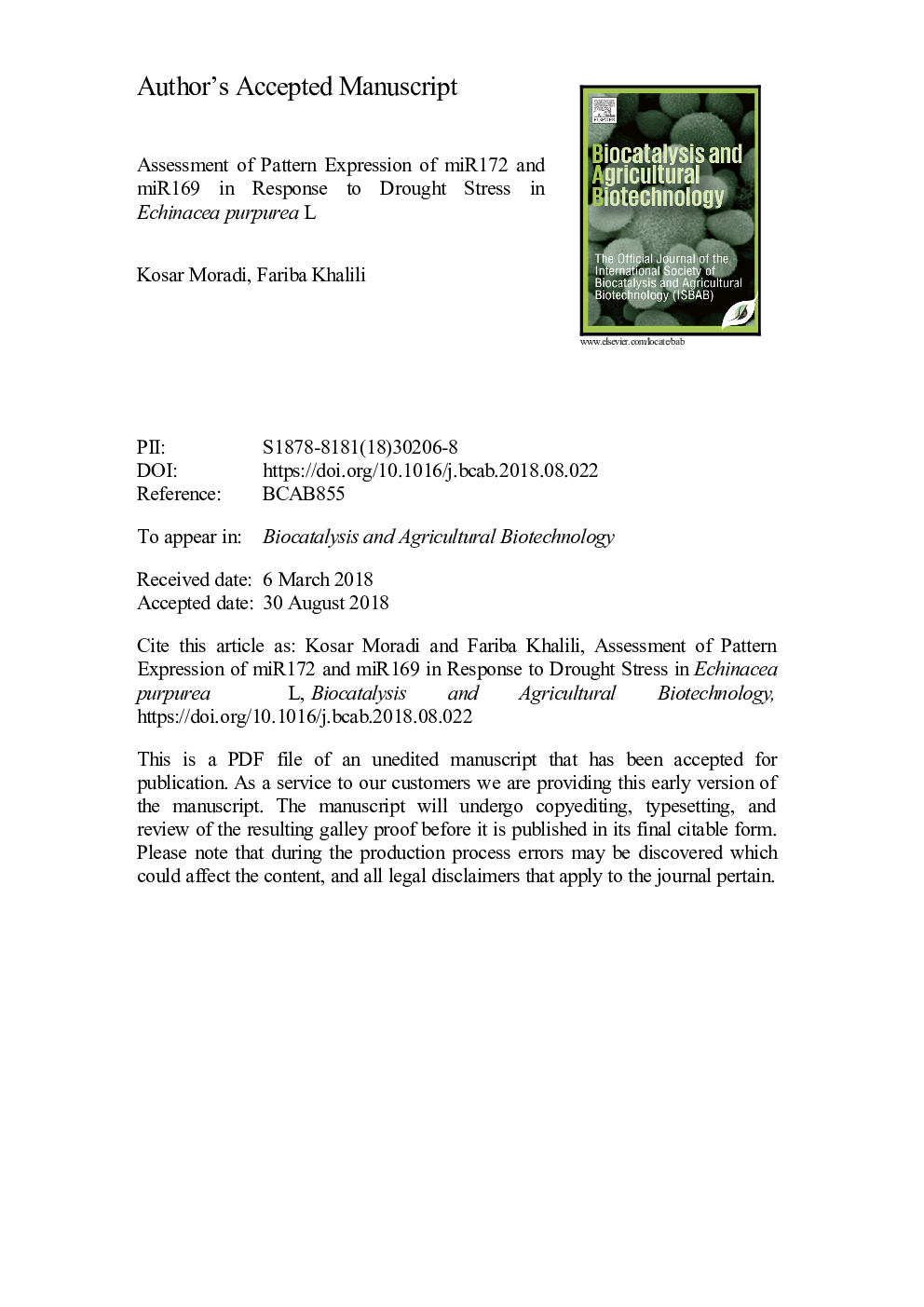| Article ID | Journal | Published Year | Pages | File Type |
|---|---|---|---|---|
| 11007668 | Biocatalysis and Agricultural Biotechnology | 2018 | 19 Pages |
Abstract
Drought as a natural and recurrent climatic feature in most parts of the world plays an important and limiting role in crop yields. However, plants have defensive mechanisms to overcome the inappropriate weather conditions. One of these defense mechanisms is the reprogramming of gene expression using microRNAs (miRNAs). miRNAs are small non-coding RNAs that regulate the gene expression at post-translational levels. miRNAs regulate the gene expression more by inhibiting the translation of mRNA and reducing the expression of target protein expression. Although, this activity can produces different results in different fields. In the present study using qRT-PCR method, the expression pattern of three miRNAs (miR169 and miR172) and their target genes (ARF and COX5b) in leaf tissue are studied under control conditions and four levels of drought stress (85%, 75%, 50%, and 25% of field capacity (FC)). To ensure the applying the stress on plants, the heat shock protein (HSP) expression was evaluated as a criterion. The results showed increased expression of HSP in leaf tissue, therefore the selected levels for drought stress were confirmed. The studied miRNAs had a different expression pattern during mild and severe drought stress. The expression changes of miRNAs at each level of stress were often the same, and their process of expression in contrast to target genes were incongruous in most cases. This could be due to the differences between the target cell and the cells in which the miRNAs are expressed in them, and indicates the complexity of the regulatory network of miRNAs.
Related Topics
Life Sciences
Agricultural and Biological Sciences
Agricultural and Biological Sciences (General)
Authors
Kosar Moradi, Fariba Khalili,
